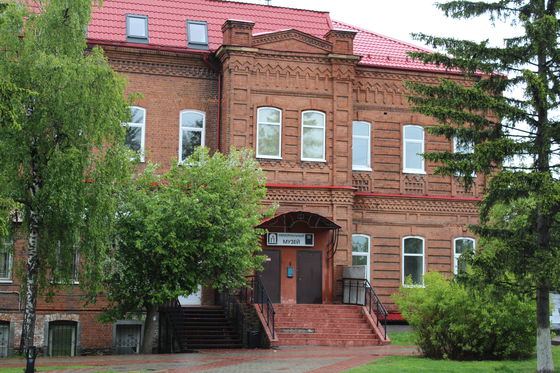Historical and Young Tomsk
EXPLORE THE CITY AND YOURSELF
Photos from http://gorod.tomsk.ru/index-1343242469.php

The Siberian Athens
Tomsk got its nickname, ‘Siberian Athens’, thanks to its unique status in the Russian Asia. Like ancient Athens, Tomsk today is a center of culture and education. This status is provided by six universities located in the town: Tomsk State University and Tomsk Polytechnic University (the two universities that have received the status of particularly valuable objects of Russian people’s cultural heritage), University of Control Systems and Radioelectronics, Siberian State Medical University, University of Architecture and Building, and Pedagogical University. Some of them are the first of their kind in the Russian Asia. Besides universities, Tomsk is also home to plenty of research institutes and colleges. Thus, Tomsk attracts a lot of students not only from Russia but also from neighboring countries and elsewhere.
The history of each university is unique and closely connected with the Tomsk history and the history of the country on the whole. The universities' museums are meticulous about extensive collections of artifacts associated with education and research activities of the past. But the special place in the history belongs to outstanding graduates. Thus, in the Historical Museum of TPU, one can get to know how Nikolai Kamov and Mikhail Mil, the famous creators of Ka and Mi helicopters, started out.
Video by Elena Kharapudchenko
Created by Olga Lobankova, Anna Kradetckaia, Andrei Zviagin and Anastasiya Piletskaya
At first glance
At first glance, Tomsk may seem an ordinary Russian city, but it's only at first glance. In fact, Tomsk is a city of historical traditions, respect for and interest in antiquity, and it is also the city of the youth, where each inhabitant is a person with a great future, and every fifth resident is a student.
History
Tomsk is one of the nicest Siberian towns. It has passed successfully through all stages of what a prosperous town in Siberia had to – and while other urbanized areas perished or changed drastically, it was developing gradually, adding to its charm and power. At first, it was a military settlement at the eastern border of Russia, then a trade and craft town, later an administrative and cultural center, and, finally, the city of industry and science.
In 1604 the Tatar prince and his embassy visited Russian Tsar Boris Godunov asking him to grant them protection of Moscow and build a Russian fortress on the Tom River to protect the Tatars from their aggressive neighbors, the Kyrgyz and Kalmyk tribes. On March 25, 1604, the Tsar sent his two military leaders with a task to establish a fortress on the banks of the Tatar River, Tom, prepare the land to develop agriculture and bring Russian allegiance to the local population. In the XVIII Century the boundaries of the Russian state moved far to the south and east, the raids stopped, and Tomsk lost defensive significance. Since the middle of the XVIII Century and up to the Soviet times, Tomsk was a place of exile. These days a Remand Prison Memorial Museum (NKVD) is located in Tomsk.
Photo credit: Anastasiia Piletskaia
Folk Art
Tomsk is not only associated with history, education, and scientists. Tomsk is very much concerned to keep its cultural traditions. One of the examples is a folklore-ethnographic ensemble named ''Peresek.'' The group name is very symbolic. "Peresek" is a polyphonic combination of music-making. The repertoire of the ensemble is based on traditional songs of Siberian villages as well as on South-Russian, Cossack, Ukrainian, and Belarusian songs. The female ensemble members are dressed in traditional clothes of the Siberian region - sarafans. According to the research, the Russian tradition of the ethnic singing is one of the most ancient traditions of the Indo-European culture. As a result, extant harmonies, words, and rhythms give us that precision and strength that our ancestors used in ancient times.